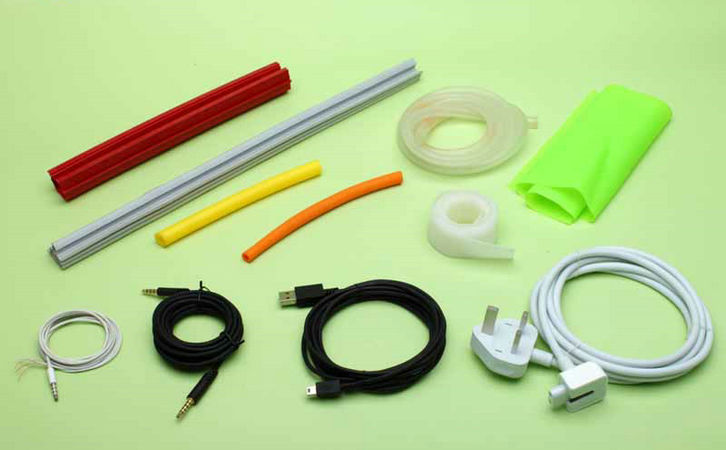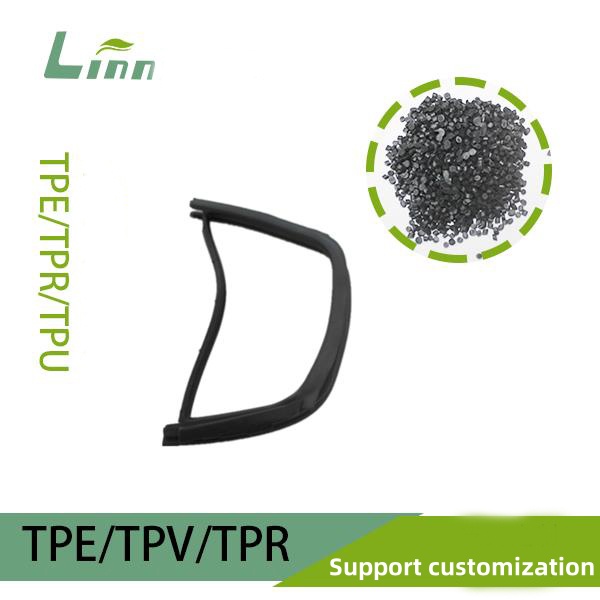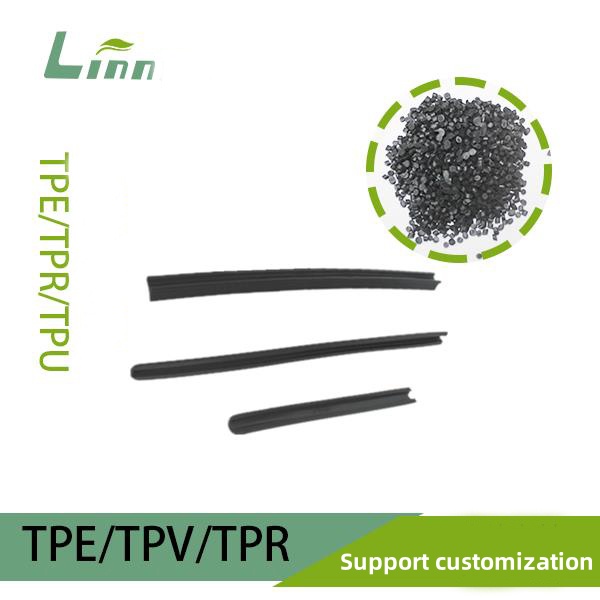As someone who has been deeply engaged in the polymer materials industry for years, I understand the unique “temperament” of TPE (Thermoplastic Elastomer) materials in practical applications. Recently, many friends have reached out to me with a common yet frustrating issue—wax bloom on TPE surfaces. This problem may seem straightforward, but it involves multiple factors, including material formulation, processing techniques, and post-treatment methods. Today, I’ll draw on my experience and industry knowledge to dive deep into the causes of wax bloom on TPE surfaces, how to address it, and preventive measures to keep it at bay. My goal is to help you resolve this issue thoroughly.

Why Does Wax Bloom Occur on TPE Surfaces?
TPE materials are prized for their excellent elasticity, weather resistance, and ease of processing, making them a go-to choice for automotive components, medical devices, consumer electronics, and more. However, during production or use, TPE products sometimes develop a white, waxy layer on their surfaces—a phenomenon known as wax bloom. This not only affects the product’s appearance but can also reduce surface adhesion and complicate subsequent processes like painting or bonding.
The root causes of wax bloom are closely tied to the TPE’s formulation and processing conditions. Here are the main culprits:
Additive Migration: TPE formulations often include additives like lubricants, plasticizers, or antioxidants. Under certain conditions (e.g., high temperatures or prolonged storage), these additives may migrate from the material’s interior to its surface, forming a waxy layer.
Improper Formulation: Excessive amounts of certain additives or poor compatibility with other components can lead to exudation.
Suboptimal Processing Conditions: During injection molding or extrusion, excessively high temperatures or inadequate cooling can trigger additive volatilization or migration.
Environmental Factors: Prolonged exposure to high temperatures, humidity, or UV light can accelerate additive exudation.
Improper Storage: Dramatic changes in temperature or humidity during transportation or storage can also induce wax bloom.
Understanding these causes allows us to tackle the issue more effectively. Next, I’ll outline practical methods to handle wax bloom on TPE surfaces and share tips to prevent it.

How to Address Wax Bloom on TPE Surfaces?
Dealing with wax bloom requires both short-term fixes and long-term strategies. Below, I’ve compiled a range of practical approaches based on my experience.
1. Short-Term Fixes: Physical and Chemical Cleaning
If wax bloom has already appeared on TPE products, you can use the following methods to clean the surface:
Physical Wiping
Use a clean, soft cloth dipped in a mild cleaning solution (e.g., diluted dish soap) or warm water to gently wipe the surface. This method works well for minor wax bloom. After wiping, rinse with clean water and dry thoroughly to prevent residual moisture from causing secondary issues.
Organic Solvent Cleaning
For more stubborn waxy deposits, mild organic solvents like isopropyl alcohol or ethanol (70%-90% concentration) can be effective. Dip a cotton cloth in the solvent and wipe the surface, taking care not to over-soak the material to avoid damage. After cleaning, rinse with water and dry completely.
Note: Always test solvents on a small area first to ensure they don’t cause discoloration or material degradation.
Ultrasonic Cleaning
If equipment is available, place the product in an ultrasonic cleaning machine with a mild cleaning agent. Ultrasonic waves effectively remove surface deposits without causing mechanical damage. Cleaning typically takes 3-5 minutes, depending on the severity of the bloom.

2. Mid-Term Improvements: Optimizing Processing Techniques
While cleaning addresses the symptoms, reducing wax bloom requires optimizing production processes. Here are some key adjustments:
Lower Processing Temperatures
During injection molding or extrusion, reduce barrel temperatures by 5-10°C and ensure uniform mold temperatures. Excessively high temperatures can cause additives to break down or migrate.
Extend Cooling Time
Increase cooling time to ensure the product fully solidifies before demolding. This reduces the risk of additive exudation due to significant temperature differences.
Enhance Mold Design
Rough mold surfaces or poor venting can exacerbate wax bloom. Polishing the mold and optimizing vent design can help ensure smooth gas and volatile release.
3. Long-Term Solutions: Refining Formulation and Material Selection
For a lasting solution, addressing wax bloom starts at the source—optimizing TPE formulation and material choices:
Adjust Additive Ratios
Work with your material supplier to reduce the amount of lubricants or plasticizers or switch to additives with better compatibility. For instance, high-molecular-weight lubricants can significantly lower migration risks.
Choose Low-Exudation TPE
Some TPE grades are designed for low exudation, ideal for applications with high aesthetic demands. When selecting materials, review the supplier’s Technical Data Sheet (TDS) and focus on volatile organic compound (VOC) content.
Incorporate Stabilizers
Adding UV absorbers or thermal stabilizers to the formulation can mitigate environmental impacts and extend product lifespan.

4. Environmental Control: Storage and Usage
Even with optimized materials and processes, storage and usage conditions can trigger wax bloom. Here’s how to manage these factors:
Control Storage Conditions
Store TPE products in a cool, dry, well-ventilated environment, away from direct sunlight and high temperatures. Ideal storage conditions are 15-25°C with 40%-60% relative humidity.
Avoid Extreme Environments
During use, minimize prolonged exposure to high temperatures, humidity, or intense UV light. For example, automotive interior parts can benefit from UV-resistant coatings to enhance durability.
Comparison Table: TPE Wax Bloom Treatment Methods
To help you choose the right approach, I’ve created a table comparing the pros and cons of different treatment methods:
| Treatment Method | Applicable Scenarios | Advantages | Disadvantages | Recommended Frequency |
|---|---|---|---|---|
| Physical Wiping | Minor wax bloom, simple surface structures | Simple, low-cost | Limited effectiveness, requires repetition | Short-term fix, frequent use |
| Organic Solvent Cleaning | Moderate wax bloom, need quick restoration | Effective, fast | May damage material, requires testing | Short-term fix, use cautiously |
| Ultrasonic Cleaning | Severe wax bloom, complex structures | Thorough cleaning, no mechanical damage | High equipment cost, complex operation | Mid-term solution, as needed |
| Adjust Processing Temp | Wax bloom during production | Reduces bloom at source, long-lasting | Requires trial and error, higher initial cost | Long-term optimization, ongoing |
| Optimize Formulation | High aesthetic demands, long-term use | Eliminates bloom, stable performance | Long development cycle, supplier collaboration | Long-term optimization, one-time |
| Environmental Control | Storage and usage phases | Simple, extends product life | Requires ongoing environmental monitoring | Long-term prevention, ongoing |
Practical Tips to Prevent Wax Bloom on TPE
Prevention is always better than cure. Here are some proactive measures I’ve found effective in my work:
Collaborate Closely with Suppliers
When sourcing TPE materials, request detailed technical data and specify your application and aesthetic requirements. Reputable suppliers often provide tailored formulation advice.
Conduct Small-Scale Trials
Before full-scale production, run small-batch trials to monitor product performance under various conditions. If wax bloom appears, adjust processes or formulations promptly.
Perform Regular Testing
Conduct accelerated aging tests (e.g., high-temperature/high-humidity or UV exposure tests) to assess bloom risks. Refer to standards like ASTM D4329 or ISO 4892-2 for guidance.
Train Operators
Ensure production line staff are familiar with TPE material properties and adhere strictly to process parameters to avoid human errors that could lead to wax bloom.

Real-World Case Study: Resolving a Wax Bloom Issue
A few years ago, I helped an automotive parts manufacturer tackle a TPE wax bloom issue. Their car armrests developed a white waxy layer after six months of use, leading to customer complaints. After investigation, we pinpointed excessive lubricant content and high processing temperatures as the causes. Our solution involved:
Reducing injection molding temperature from 220°C to 205°C and extending cooling time by 10 seconds.
Collaborating with the material supplier to lower lubricant content by 20% and add a high-molecular-weight stabilizer.
Conducting high-temperature/high-humidity aging tests to confirm the new formulation’s stability.
These changes eliminated the wax bloom issue, significantly boosting customer satisfaction. This experience underscored the importance of addressing wax bloom through a combination of process, formulation, and testing adjustments.

FAQs: Addressing Common Questions
To provide a comprehensive resource, I’ve compiled answers to some frequently asked questions about TPE wax bloom:
Q1: Does wax bloom affect TPE material performance?
A: Typically, surface wax bloom doesn’t significantly impact mechanical properties like elasticity or strength. However, it can reduce surface adhesion, affecting processes like painting or bonding. Severe bloom may indicate formulation or process issues that require further investigation.
Q2: Is it safe to clean TPE products with alcohol?
A: Using 70%-90% ethanol or isopropyl alcohol in moderation is generally safe, but test on a small area first to avoid discoloration or swelling. After cleaning, rinse with water and dry thoroughly.
Q3: How can I tell if wax bloom is due to additive exudation or external contamination?
A: Advanced techniques like Fourier Transform Infrared Spectroscopy (FTIR) or Gas Chromatography-Mass Spectrometry (GC-MS) can identify the chemical composition of surface deposits. Additive exudation typically shows lubricant or plasticizer signatures. If testing isn’t feasible, observe the surface after solvent cleaning: additive bloom tends to reappear, while contamination is removed permanently.
Q4: Can surface coatings prevent TPE wax bloom?
A: Coatings like UV-resistant or hydrophobic layers can slow wax bloom but won’t address the root cause. Prioritize formulation and process optimization, using coatings as a supplementary measure.
Q5: Which industries are more prone to TPE wax bloom issues?
A: Industries with stringent aesthetic and durability requirements—like automotive interiors, medical devices, and outdoor products—are more likely to encounter wax bloom due to complex environmental conditions and high-quality standards.
Final Thoughts
Wax bloom on TPE surfaces may be a common challenge, but with the right approach, it’s entirely manageable. Whether you’re using physical cleaning for quick fixes or optimizing formulations and processes for long-term success, the key is attention to detail and persistence. As a seasoned professional, I know how much every small factor can impact product quality, and I hope my insights offer you a clear path forward. If you have more questions, feel free to reach out—I’m happy to help brainstorm solutions!




